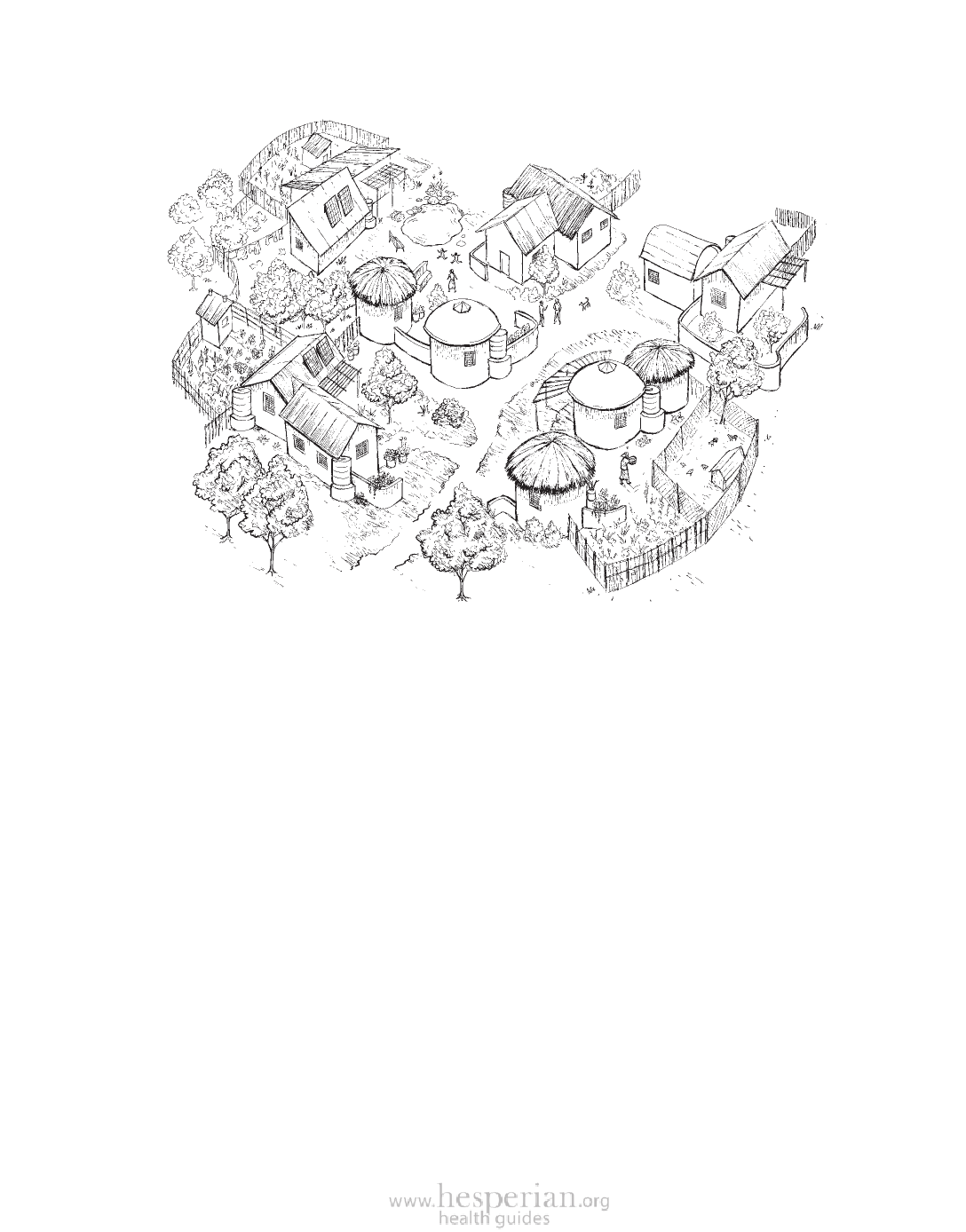
349
A Healthy Home
The ideal home is not just a building for shelter. A home should be a place
free from harm, that supports physical, mental, and social well-being, and
provides dignity and a sense of community. A healthy home protects against
extreme heat and cold, rain and sun, wind, pests, disasters such as floods and
earthquakes, and pollution and disease.
Unfortunately, many people’s living conditions do not protect their health.
Poor living conditions may even cause illness, or make health problems worse.
Whether people live close together or spread apart, poor housing, indoor air pollution,
pests, and toxic chemicals in household products can cause many illnesses.
As more people move from rural areas into cities and towns, the way people
live and maintain their homes changes, often for the worse. People who spend
a lot of time in the home, such as children, the elderly and disabled, and people
with long-term health problems such as HIV, suffer the most.
How to improve living conditions by making homes safer and more
comfortable depends on local traditions, available materials, and climate.
Unfortunately, it also depends on income and ownership. People who rent their
homes often have little control over their living conditions and must depend
on their landlords to make improvements. People in shantytowns, marginal
communities, or other “temporary” settlements (which too often become
permanent) live in homes that rarely provide security or comfort. But whether a
person owns, rents, or lives in makeshift housing, working with neighbors is the
most effective way to improve living conditions in the whole neighborhood.